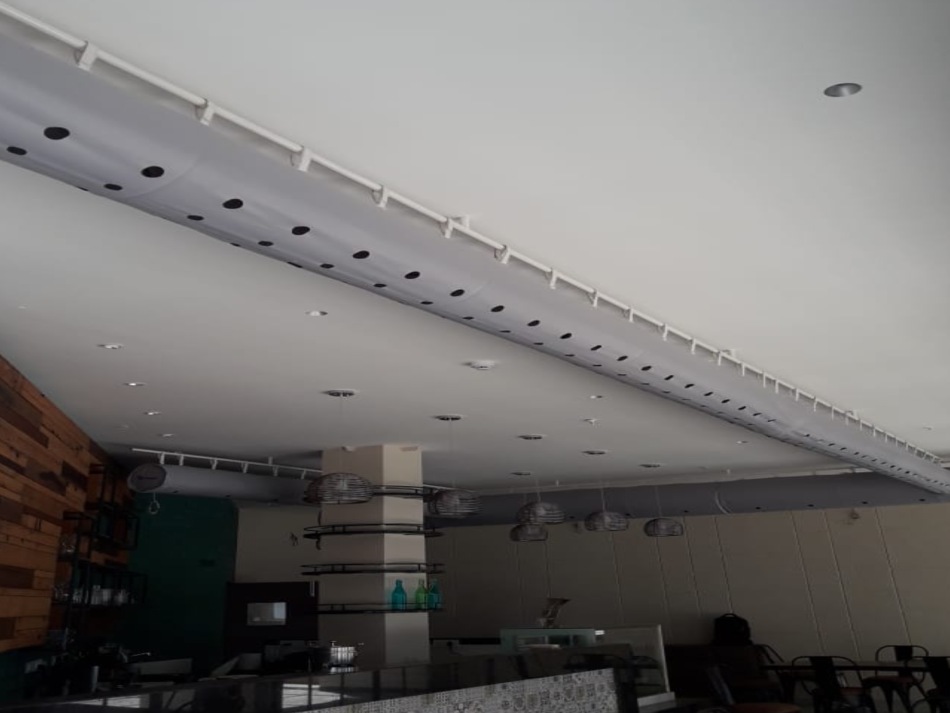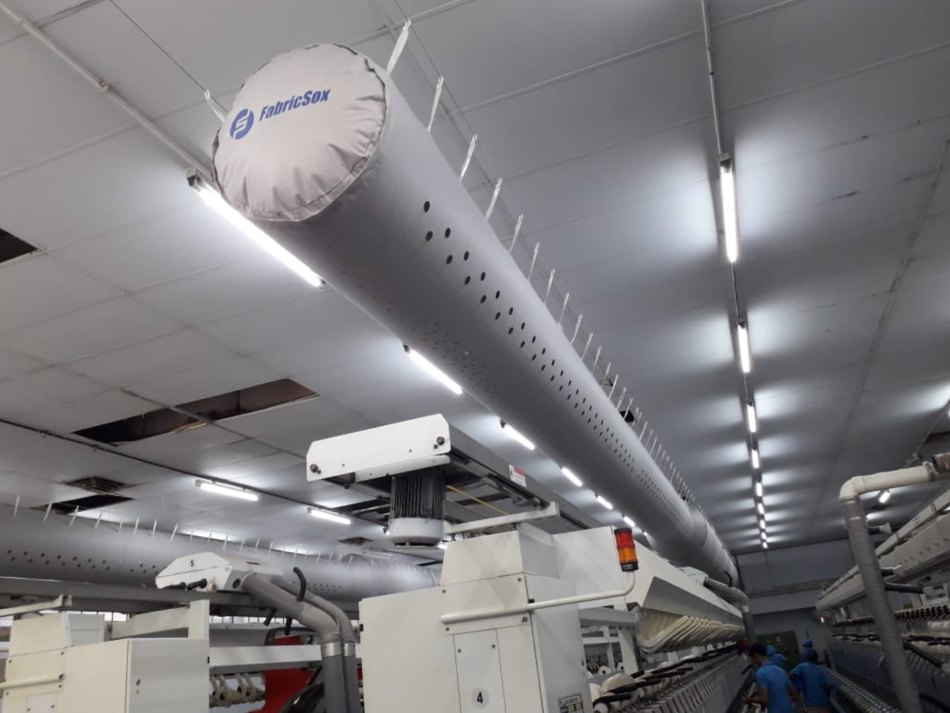We at FabricSox create fabric air ducts that are custom engineered for each project using proprietary designs and production software. The following steps are taken while designing the FabricSox system:
Installation of FabricSox fabric ducts using two methods
1. Cable Suspension System
The cable suspension system will be installed first by the Fabricsox team. The cables will be installed at the appropriate height and distance apart according to the design plans.
The cable tension will then be adjusted to ensure a level and stable suspension system.
Wire ropes are suspended between two surfaces (walls etc.) or between two bracket supports, onto which the ducts are hung using hooks located on the fabric ducts.
The suspension clips will be spaced evenly along the duct to ensure a uniform suspension. Suspensions are possible in three ways based on the location of the hanging hook: 12 o’clock (single row), 2 & 10 ‘O’ Clock and 3 & 9 o’clock (double row): Cable suspension methods are mainly used for a full round and rectangular ducts. The fabric duct will be centered on the cable suspension system and adjusted to the correct height.
Diffusers and other accessories will then be installed as per the design plans. The diffusers will be attached to the fabric duct using suspension clips or other mounting hardware.
2. Aluminium Track Suspension

a) Flush Mount Track
In this method, the aluminum track shall be installed according to the design plans. Flush mount tracks are mostly used for half-round ducts and are securely attached to the ceiling, false ceiling, or wall structures.
Fabric ducts in this case come with sliders fixed onto them, which are then slid into the flush mount track. The fabric duct will be attached to the aluminum track using a flush mount track. The track would be sewn onto the fabric duct and then inserted into the aluminum track. The flush mount track will be positioned evenly along the duct to ensure a uniform attachment.

b) H-Track
To install the ducts, aluminum tracks will be placed at the correct height and distance using H-track suspension, which is commonly used for full-round ducts hung from the ceiling with suspension cables.
To attach the H-Track to the fabric duct, a sewing machine will be used to position it evenly for uniform attachment. Sliders on the fabric duct are then slid into the flush mount track, which must also be positioned evenly along the aluminum track for uniform attachment.
